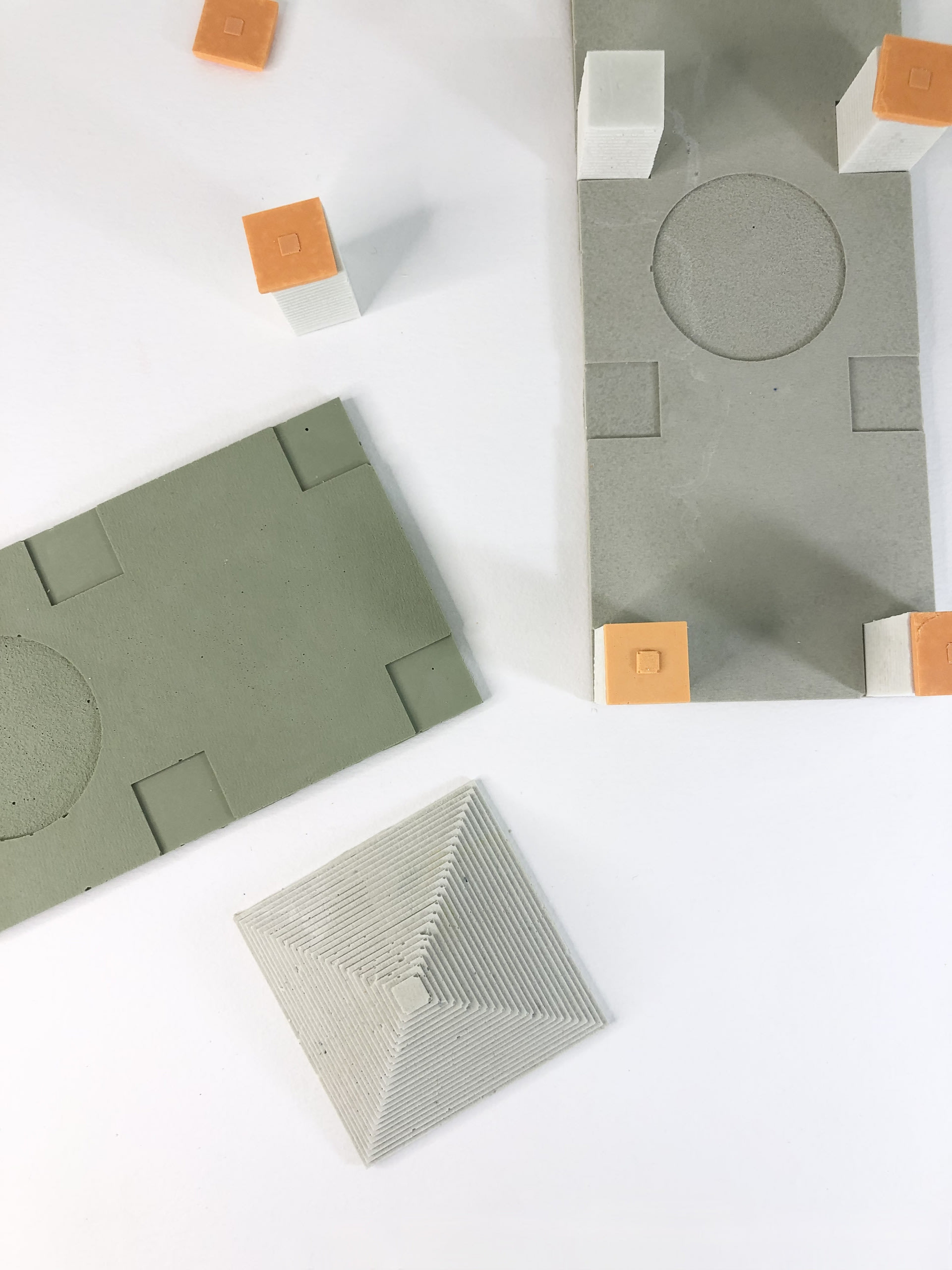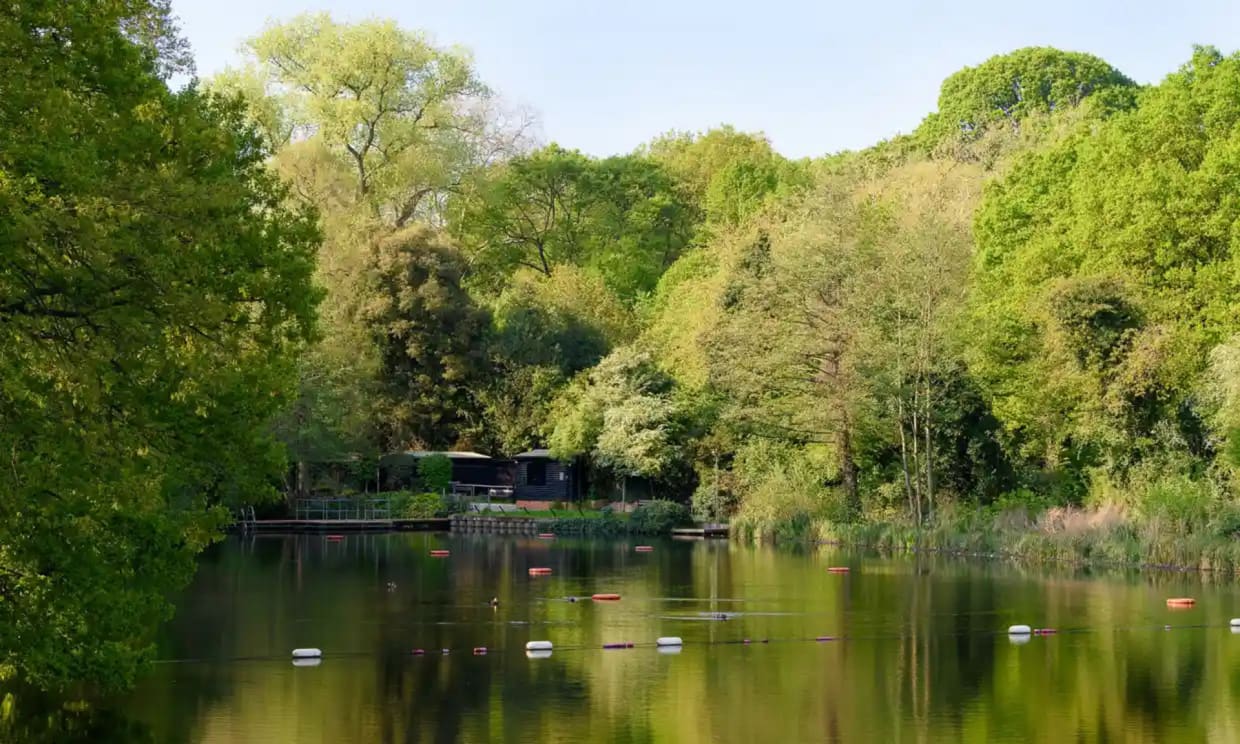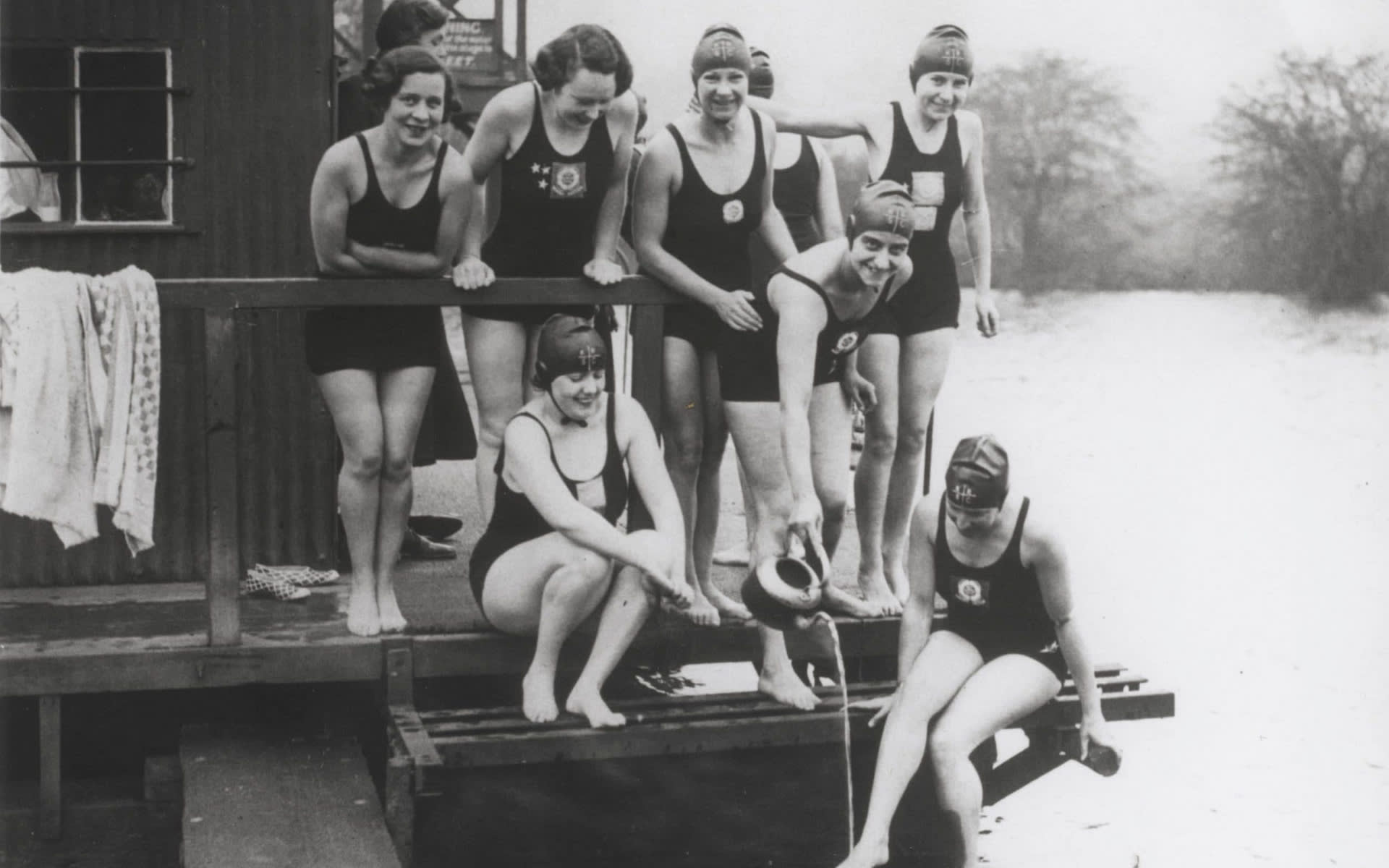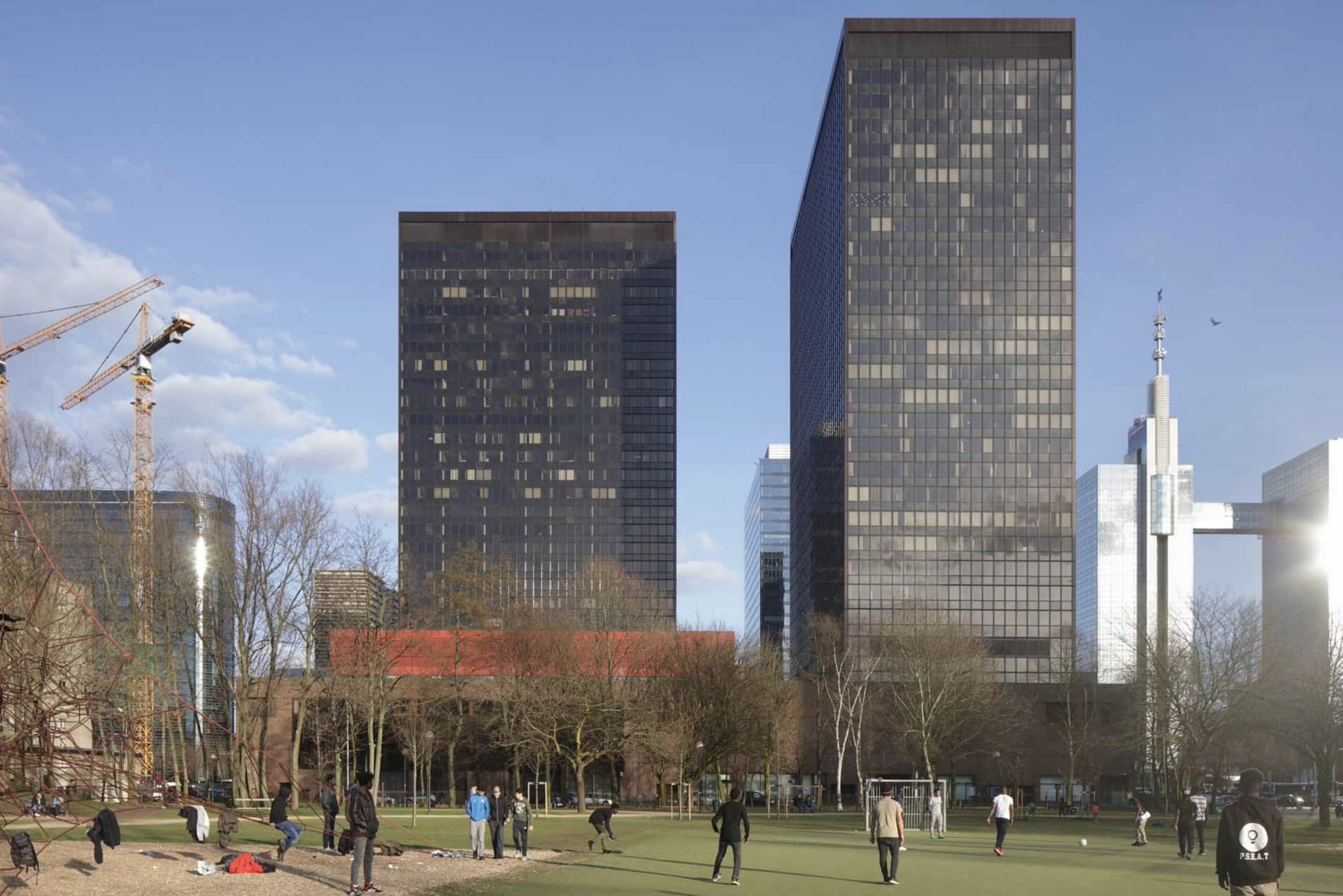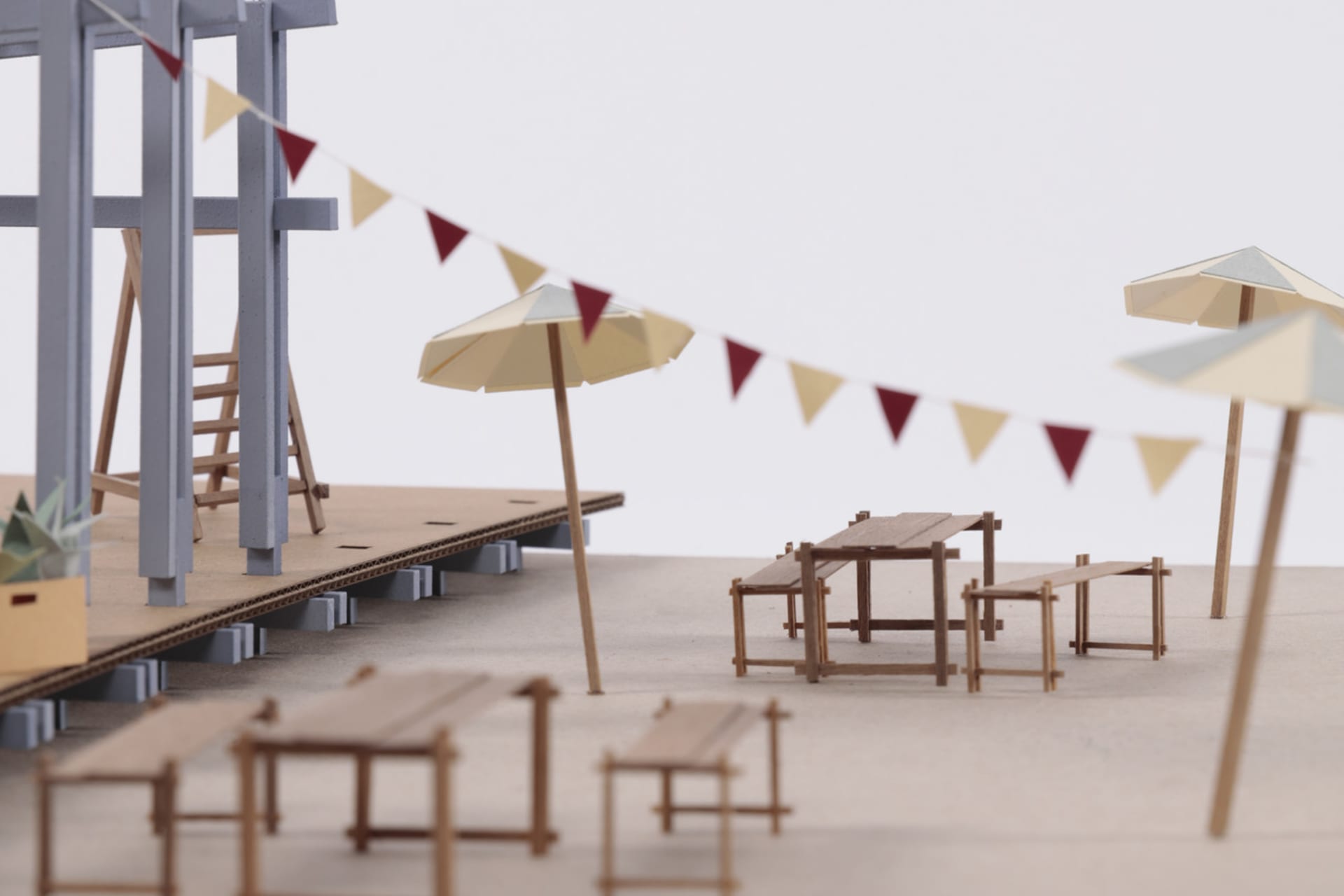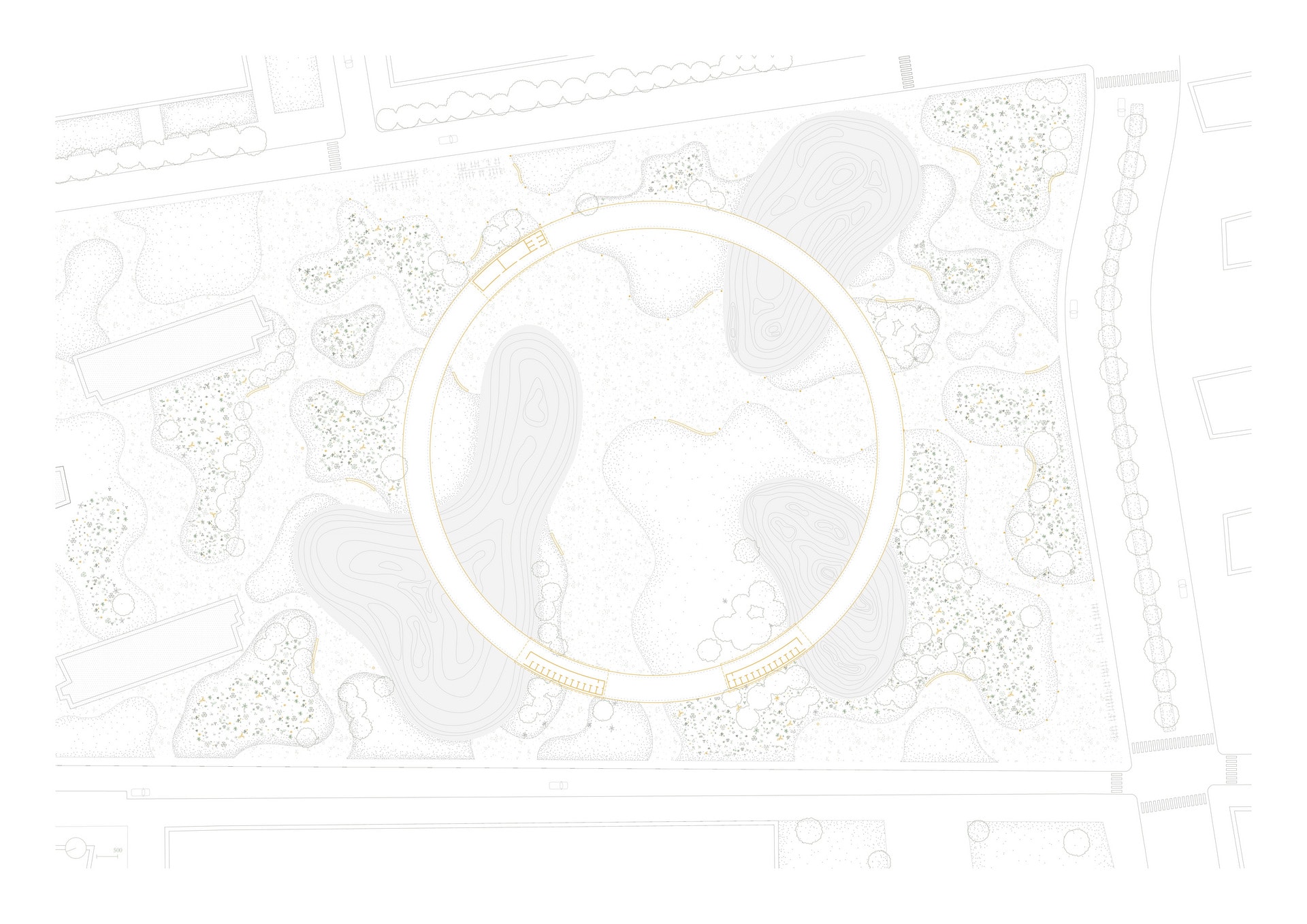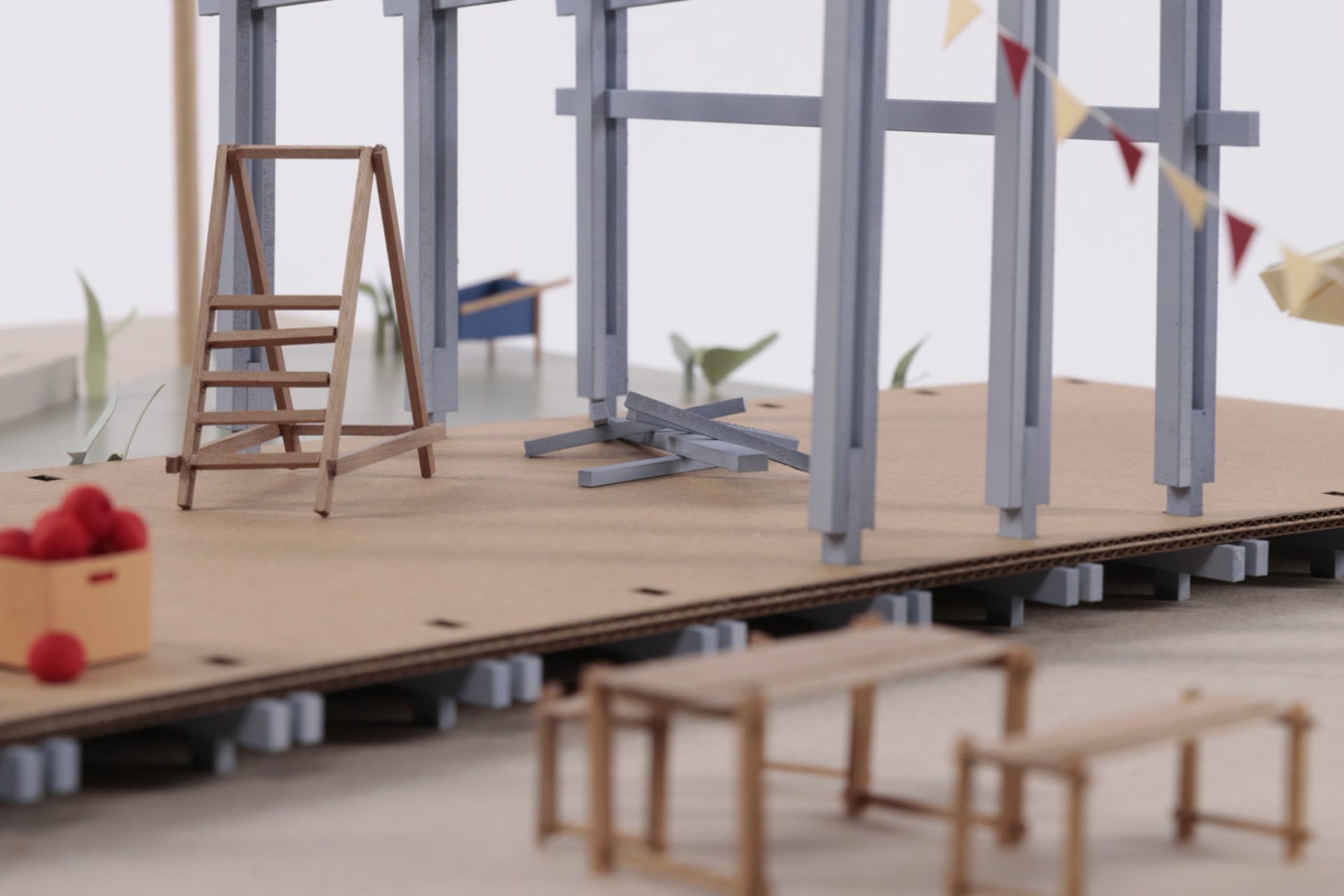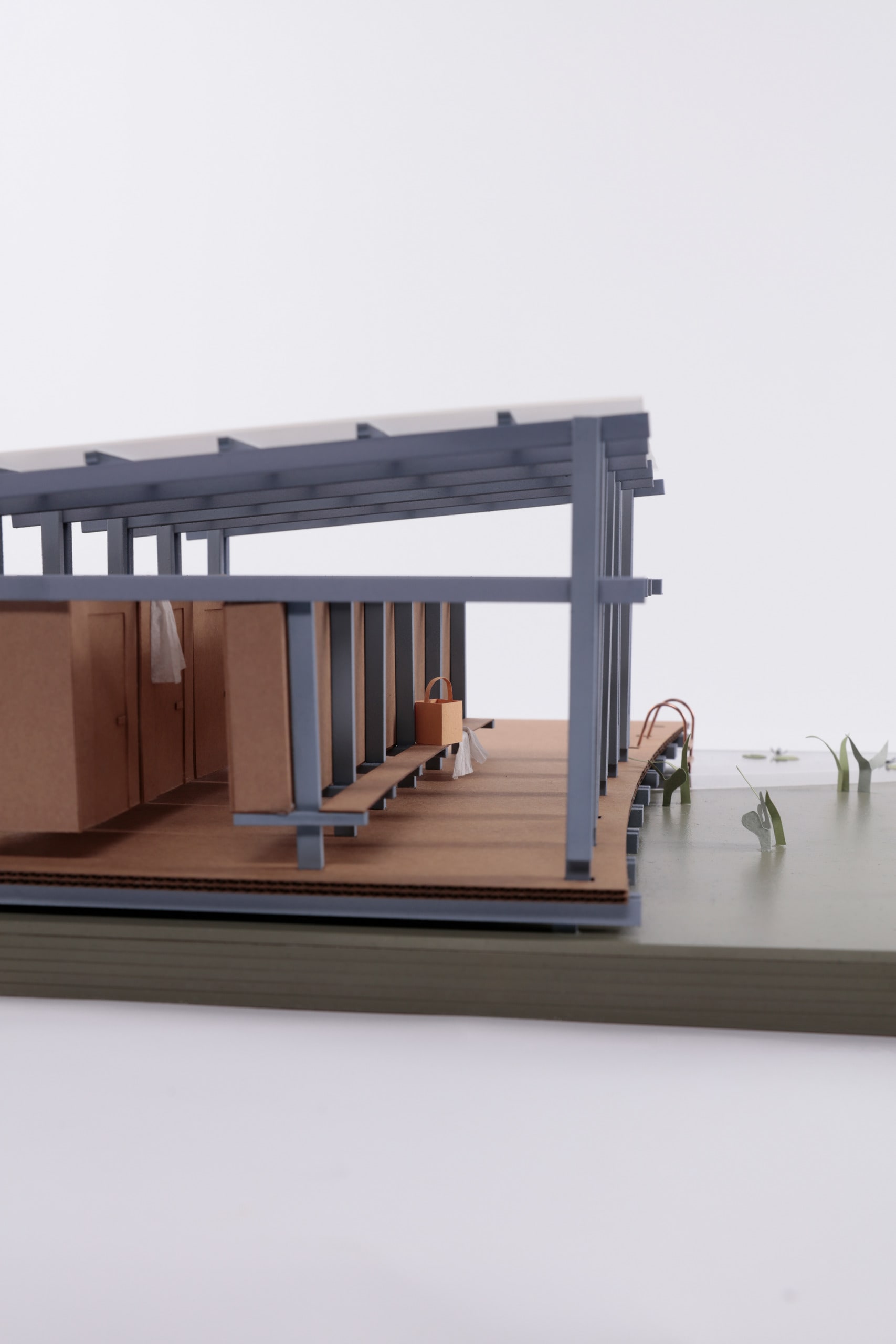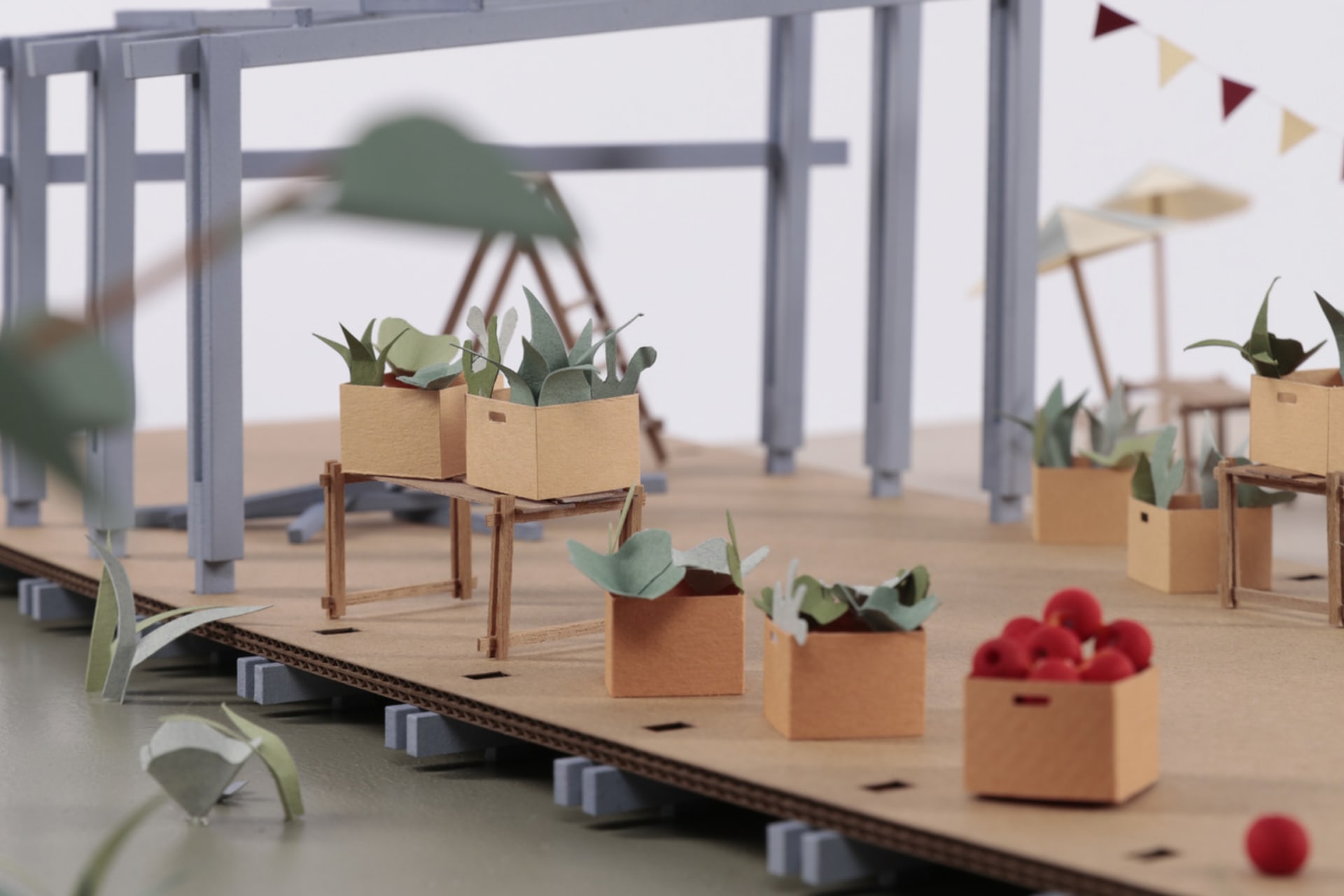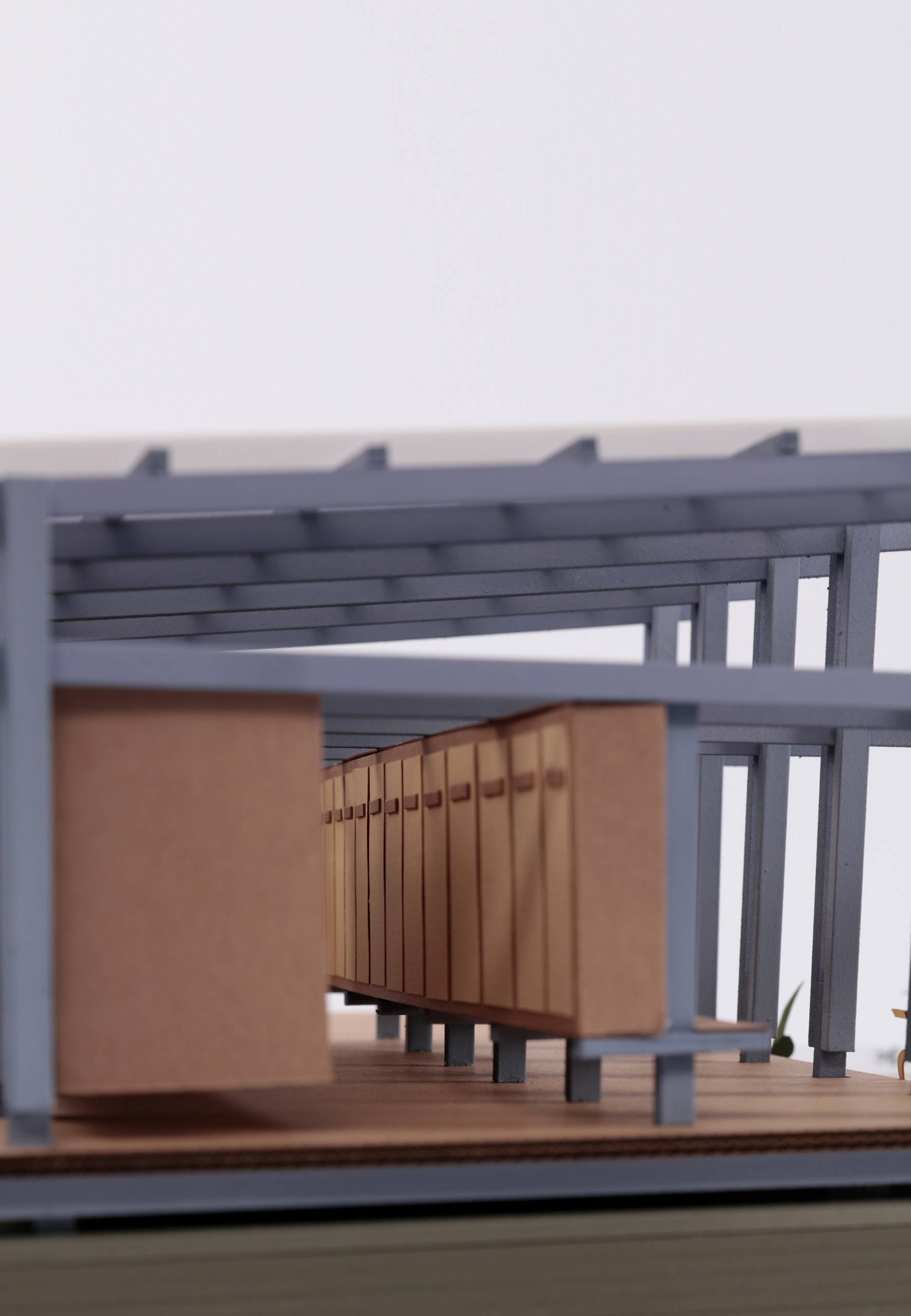Charlotte is from Brussels where she completed her Part 1 at UCL. In January 2020, she worked as an intern at Gluckman Tang in New York City, a practice specialised in the construction of galleries and museums.
Last year, with ADS5 she designed a self-sustaining communal building where inhabitants could grow food and fish in aquaponic farms.
She is really passionate about environmentally responsive architecture and model making. The RCA has allowed her to investigate previously untapped areas; exploring personal interests such as Net zero Carbon buildings and design for disassembly to ensure circularity.


